Teeth and Microbes
A child gets first tooth when he/she is six or seven months old. At the age of three a child has usually 20 teeth. The first set of teeth is called milk teeth or temporary teeth. When the child is about six years old, the milk teeth or temporary teeth begins to fall out. New teeth begins to grow in place of milk teeth. These new teeth are called permanent teeth. An adult human being has 32 permanent teeth.
Types of Teeth
We have different types of teeth in the upper and lower jaw of the mouth. Let’s see what are these different types of teeth.
Incissors
Incisors are the four teeth at the front of each jaw. Therefore there are eight incisors teeth in total. They help to cut and bite food.
Canines
The teeth next to the incisors are canines. As they are sharp and pointed, they are used for tearing foods like meat. There are four canines in all.
Premolars
The two teeth next to each canine are premolars. They are flat and wide in shape. They help to crush food. There are eight premolars teeth.
Molars
The three teeth at the back of the mouth, next to the premolars are molars.They are broader in shape. They help to grind food. There are twelve molars in all.
Tooth Structure
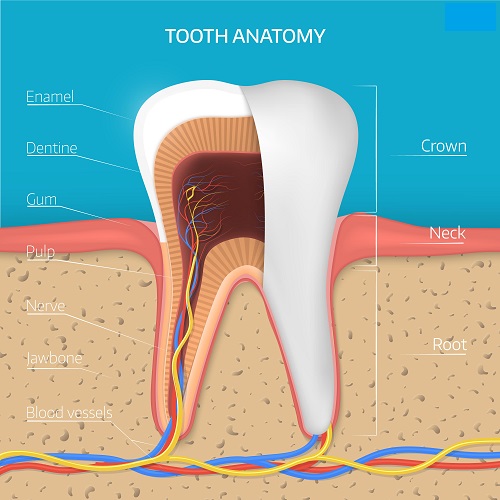
Please see the above image carefully. It is a graphic image of the structure of a tooth. As seen in the above image, the part of the tooth which is above the gum is called the crown. The part of the tooth which is inside the gums is called the root. It holds the tooth firmly in place.
The outer layer of the crown is made of a substance called enamel. It is very hard, even harder than the bone in our body. Dentine is a layer beneath the enamel. It is not as hard as enamel. The innermost portion of the tooth is called pulp. It contains nerves and blood vessels.
Taking Care of Your Teeth
Our permanent teeth will last a lifetime if we take care of it properly. But if we do not take care of Permanent teeth, it may decay and fall out. Once permanent teeth fall out, new teeth will not grow to replace it.
Let us know why the teeth decays. While eating food, small pieces of food gets stuck between our teeth. If we don’t remove these small pieces of food, germs will grow on it. Acids produced by these germs harm the enamel. After some time small holes called cavities will form on the teeth. The germs continue to attack the teeth and the cavities continues to become bigger and bigger. It starts hurting when the cavity reaches the pulp.
We should take our teeth by following the below mentioned steps:
- Brush teeth twice a day. In the morning and at night before going to sleep. Brushing removes the small pieces of food stuck between our teeth.
- We should wash our mouth with water after having every meal.
- Eating too much chocolates and sweets can damage our teeth.
- We should eat foods rich in vitamin A and calcium such as milk, eggs and green leafy vegetables.
- We must regularly visit dentists to check for any damage to our teeth. If there is any cavities in our teeth, then the dentist can help us avoid any further damage to the teeth.
Microbes
A microbe is a very small living thing, which you can only see if you use a microscope. They are found everywhere, in the air, in water, in soil and even inside our body. Some microbes are useful to us, whereas some are harmful. Harmful microbes can cause diseases. These diseases causing microbes are called germs. The four main kinds of mircobes are bacteria, fungi, protozoa and viruses.
Bacteria

Bacteria are the most common living things on the Earth. They are found everywhere. They are of different shapes and sizes. There are both good and bad bacteria. Harmful bacteria causes diseases like typhoid, Tetanus and food poisoning. Bacteria also causes tooth decay.
Good bacteria helps in decaying remains of dead plants and animals. They are also used in making food products such as cheese, vinegar and yoghurt.
Fungi
Fungi helps in carrying out the decomposition of dead remains of plants and animals. They can cause skin problems such as ringworm and dandruff. Yeast is a fungus which is used in making bread.
Protozoa
Protozoa lives in the sea, in rivers, lakes, or stagnant ponds of freshwater, in the soil and even in dead remains of plants and animals. They cause diseases like malaria.
Virus
Virus are the smallest microbes. Viruses, like bacteria are found almost everywhere; in the soil, in the air, on surfaces or in animals and plants. They cause diseases like common cold, measles, mumps and polio.
Click Next button for Exercises on the chapter – Teeth and Microbes for Class 4.
Fill in the Blanks exercise on the chapter – Teeth and Microbes for Class 4
- An adult human being has ___ teeth.
- Teeth begin to appear at the age of ____ months.
- ________ are the smallest microbes.
- ______ is a fungus that is used in making bread.
- The innermost portion of the tooth is called the ______.
- _______ are used for tearing food such as meat.
- In a tooth, the outer layer of the crown is made of a substance called _______.
- Microbes can only be seen through a ________.
- The disease typhoid is caused by _________.
- The sharp and pointed teeth in our mouth are called ________.
Click Next button for True and False Exercise on the chapter – Teeth and Microbes for Class 4.
True and False Exercise on chapter – Teeth and Microbes for Class 4
Also Read: Kinds of Sentences

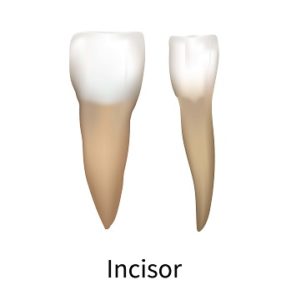
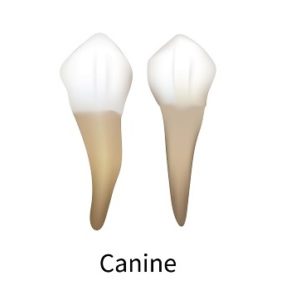
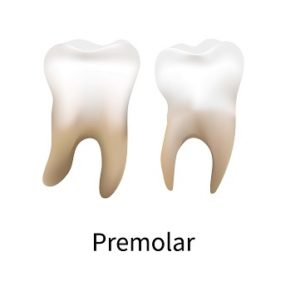
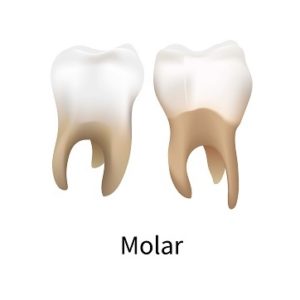
This wonderful and very well written article reminded me of when I had big problems with teeth, cavities and pain, yellow and ugly teeth, then I
found a simple way to rebuild my teeth and gums and get rid
of tooth decay. (maybe it will help someone): https://bit.ly/2ZV061N Thanks!
Keep doing a great job!
Whoa whoa whoa whoa whoa whoa whoa whoa whoa whoa whoa,😀😀😀😀😀😀😀😀😀😀😀😀😀😀😀😀😀😀